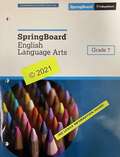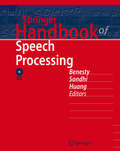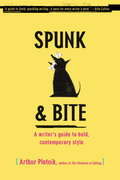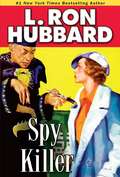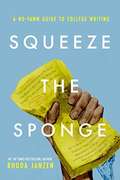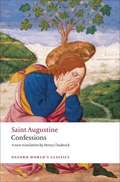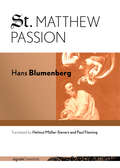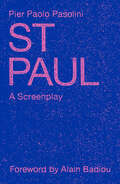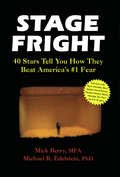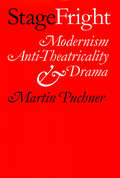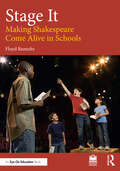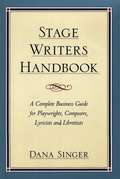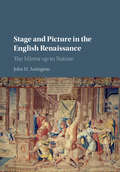- Table View
- List View
SpringBoard® English Language Arts, English III
by Lori O'DeaNIMAC-sourced textbook. Designed to meet the needs of the Common Core State standards for English Language Arts. It helps students develop the knowledge and skills needed for advanced placement as well as for success in college and beyond without remediation.
SpringBoard® English Language Arts, Grade 8
by Lori O'DeaNIMAC-sourced textbook. Designed to meet the needs of the Common Core State standards for English Language Arts. It helps students develop the knowledge and skills needed for advanced placement as well as for success in college and beyond without remediation.
SpringBoard® Writing Workshop with Grammar Activities, Grade 9
by Lance Balla Robert J. Caughey Charise HallbergNIMAC-sourced textbook
Springer Handbook of Speech Processing
by M. M. Sondhi Jacob Benesty Yiteng HuangThis handbook plays a fundamental role in sustainable progress in speech research and development. With an accessible format and with accompanying DVD-Rom, it targets three categories of readers: graduate students, professors and active researchers in academia, and engineers in industry who need to understand or implement some specific algorithms for their speech-related products. It is a superb source of application-oriented, authoritative and comprehensive information about these technologies, this work combines the established knowledge derived from research in such fast evolving disciplines as Signal Processing and Communications, Acoustics, Computer Science and Linguistics.
Spunk and Bite: A Writer's Guide to Bold, Contemporary Style
by Arthur PlotnikSticking to the rules creates boring text that cannot get out of its own way and let the concepts through, so Plotnik sticks to what works in real life. The result is not just a solid guide to usage and composition, but also a source of inspiration. For this edition Plotnik provides an all-new set of writing exercises that work in creating crisp novels, fiction writing, business reports and even blogs. Annotation ©2007 Book News, Inc. , Portland, OR (booknews. com)
Spy Killer
by L. Ron HubbardDiscover intrigue and suspense. Kurt Reid may be innocent of the murder he's charged with (and of grand larceny, for that matter), but he's got no time to be thrown in jail and defend himself. Instead, Reid flees to pre-Communist China and Shanghai, the exotic city of mystery and death.Reid takes refuge in a tea house where he meets White Russian Varinka Savischna, whom he manages to rescue from certain death. As beautiful as she is smart, she recruits him in her crusade against Chinese intelligence services. Unfortunately, Reid manages to get himself captured by the Chinese and blackmailed into pursuing and assassinating a Japanese spy.Now Reid must enter the cloak-and-dagger world of espionage and intrigue, where everything and everyone is not who or what they appear to be. "...novella length adventure-cum-mystery stories based in 1930's China offer further evidence of Hubbard's pulp-action mastery." --Ellery Queen
Squeeze the Sponge: A No-Yawn Guide to College Writing
by Rhoda JanzenThis book uses the author’s powerful, hilarious, and emotionally generous voice as a bestselling memoirist and award-winning professor to offer undergraduate students an inspirational writing guide. This indispensable textbook is replete with hands-on activities, seventy pages of grammar instruction, and memorable tips, examples, and analogies to help students refine their writing—in other words, “squeeze the sponge.” In this book, the author achieves something new: a textbook so lively and humorous that students will actually want to read it.
St. Augustine's Confessions
by Saint Augustine Henry ChadwickIn his own day the dominant personality of the Western Church, Augustine of Hippo today stands as perhaps the greatest thinker of Christian antiquity, and his Confessions is one of the great works of Western literature. In this intensely personal narrative, Augustine relates his rare ascent from a humble Algerian farm to the edge of the corridors of power at the imperial court in Milan, his struggle against the domination of his sexual nature, his renunciation of secular ambition and marriage, and the recovery of the faith his mother Monica had taught him during his childhood. Now, Henry Chadwick, an eminent scholar of early Christianity, has given us the first new English translation in thirty years of this classic spiritual journey. Chadwick renders the details of Augustine's conversion in clear, modern English. We witness the future saint's fascination with astrology and with the Manichees, and then follow him through scepticism and disillusion with pagan myths until he finally reaches Christian faith. There are brilliant philosophical musings about Platonism and the nature of God, and touching portraits of Augustine's beloved mother, of St. Ambrose of Milan, and of other early Christians like Victorinus, who gave up a distinguished career as a rhetorician to adopt the orthodox faith. Augustine's concerns are often strikingly contemporary, yet his work contains many references and allusions that are easily understood only with background information about the ancient social and intellectual setting. To make The Confessions accessible to contemporary readers, Chadwick provides the most complete and informative notes of any recent translation, and includes an introduction to establish the context. The religious and philosophical value of The Confessions is unquestionable--now modern readers will have easier access to St. Augustine's deeply personal meditations. Chadwick's lucid translation and helpful introduction clear the way for a new experience of this classic. About the Series:For over 100 years Oxford World's Classics has made available the broadest spectrum of literature from around the globe. Each affordable volume reflects Oxford's commitment to scholarship, providing the most accurate text plus a wealth of other valuable features, including expert introductions by leading authorities, voluminous notes to clarify the text, up-to-date bibliographies for further study, and much more.
St. Matthew Passion (signale|TRANSFER: German Thought in Translation)
by Hans BlumenbergSt. Matthew Passion is Hans Blumenberg's sustained and devastating meditation on Jesus's anguished cry on the cross, "My God, my God, why have you forsaken me?" Why did this abandonment happen, what does it mean within the logic of the Gospels, how have believers and nonbelievers understood it, and how does it live on in art? With rare philological acuity and vast historical learning, Blumenberg unfolds context upon context in which this cry has reverberated, from early Christian apologetics and heretics to twentieth-century literature and philosophy. Blumenberg's guide through this unending story of divine abandonment is Johann Sebastian Bach's monumental Matthäuspassion, the parabolic mirror that bundled eighteen hundred years of reflection on the fate of the crucified and the only available medium that allows us post-Christian listeners to feel the anguish of those who witnessed the events of the Passion. With interspersed references to writers such as Goethe, Rilke, Kafka, Freud, and Benjamin, Blumenberg gathers evidence to raise the singular question that, in his view, Christian theology has not been able to answer: How can an omnipotent God be so offended by his creatures that he must sacrifice and abandon his own Son?
St. Paul: A Screenplay
by Pier Paolo PasoliniPresented here for the first time in English is a remarkable screenplay about the apostle Paul by Pier Paolo Pasolini, legendary filmmaker, novelist, poet, and radical intellectual activist. Written between the appearance of his renowned film Teorema and the shocking, controversial Salò, or the 120 Days of Sodom, St Paul was deemed too risky for investors. At once a political intervention and cinematic breakthrough, the script forces a revolutionary transformation on the contemporary legacy of Paul. In Pasolini&’s kaleidoscope, we encounter fascistic movements, resistance fighters, and faltering revolutions, each of which reflects on aspects of the Pauline teachings. From Jerusalem to Wall Street and Greenwich Village, from the rise of SS troops to the death of Martin Luther King, Jr, here—as Alain Badiou writes in the foreword—&‘Paul&’s text crosses all these circumstances intact, as if it had foreseen them all&’. This is a key addition to the growing debate around St Paul and to the proliferation of literature centred on the current turn to religion in philosophy and critical theory, which embraces contemporary figures such as Alain Badiou, Slavoj i ek and Giorgio Agamben.
Staar Connection Diagnostic Series Reading 5, Student Edition
by Kamico Instructional MediaThis book is a comprehensive collection of Reading Exercises with related exercises.
Stage Fright: 40 Stars Tell You How They Beat America's #1 Fear
by Mick Berry Michael EdelsteinNever before has the problem of stage fright been so eloquently examined; 40 interviews with some of the most highly-accomplished public figures shed light on this affliction, offering tips from their own experiences for overcoming it. Jason Alexander, Mose Allison, Maya Angelou, David Brenner, Peter Coyote, Olympia Dukakis, Richard Lewis, and many more sound off about their trials with stage fright, candidly discussing their fears and insecurities with life in the public eye and ultimately revealing the various paths they followed to overcoming them. Stage fright sufferers from all walks of life--whether a high school freshman nervous about an oral presentation or a professional baseball player with the eyes of the world on his bat--will find consolation by understanding the commonality of their problem, as well as helpful information to finally shed their inhibitions.
Stage Fright: Modernism, Anti-Theatricality, and Drama
by Martin PuchnerGrounded equally in discussions of theater history, literary genre, and theory, Martin Puchner's Stage Fright: Modernism, Anti-Theatricality, and Drama explores the conflict between avant-garde theater and modernism. While the avant-garde celebrated all things theatrical, a dominant strain of modernism tended to define itself against the theater, valuing lyric poetry and the novel instead. Defenders of the theater dismiss modernism's aversion to the stage and its mimicking actors as one more form of the old "anti-theatrical" prejudice. But Puchner shows that modernism's ambivalence about the theater was shared even by playwrights and directors and thus was a productive force responsible for some of the greatest achievements in dramatic literature and theater.A reaction to the aggressive theatricality of Wagner and his followers, the modernist backlash against the theater led to the peculiar genre of the closet drama—a theatrical piece intended to be read rather than staged—whose long-overlooked significance Puchner traces from the theatrical texts of Mallarmé and Stein to the dramatic "Circe" chapter of Joyce's Ulysses. At times, then, the anti-theatrical impulse leads to a withdrawal from the theater. At other times, however, it returns to the stage, when Yeats blends lyric poetry with Japanese Nôh dancers, when Brecht controls the stage with novelistic techniques, and when Beckett buries his actors in barrels and behind obsessive stage directions. The modernist theater thus owes much to the closet drama whose literary strategies it blends with a new mise en scène. While offering an alternative history of modernist theater and literature, Puchner also provides a new account of the contradictory forces within modernism.
Stage It: Making Shakespeare Come Alive in Schools
by Floyd RumohrStage It provides a simple-to-follow roadmap for teachers to help students dive into the dramatic, romantic, and playful world of Shakespeare. Originating from the highly successful NYC-based arts education program, Stages of Learning, this resource enables your drama, arts, or ELA class to learn the basics of Shakespeare's language, themes, characters, introductory staging, and directing. Designed for busy teachers, Stage It enables you to choose your own adventure depending on time, grade level collaboration, and student interest. This professional teacher’s guide has simple-to-use instructions and worksheets, such as acting tools for instruction about the plot synopsis, cast of characters, and paraphrasing; and directing tools for tips about the play and the theater-making process. Accompanying the book online are abridged versions of four of Shakespeare’s well-known plays: Hamlet, Henry V, Julius Caesar, and Othello, as well as paraphrasing worksheets, a culminating performance program template, and more. Stage It meets or exceeds many standards-based frameworks including New York State Learning Standards in the Arts, benchmarks of the New York City Blueprint for Teaching and Learning in the Arts K-12: Theater, the U.S. Common Core/State Standards, and National Arts Standards. Teachers of students aged 9–12, as well as educators in after-school or community programs, can foster a deep connection to the material through a gradual process that engages everyone in the classroom. This approach not only brings Shakespeare's timeless stories to life but also cultivates essential skills like public speaking, teamwork, and self-expression for students of all identities.For more information on Floyd Rumohr and the book, visit www.stageitplays.com.
Stage Writers Handbook
by Dana SingerDana Singer, Associate Director of America's foremost playwrights' association, the Dramatists Guild, gathers all the information and ideas stage writers need to conduct their careers in a businesslike manner, with all the protections the law provides. Includes chapters devoted to copyright, self-promotion, representation, production contracts, publishing and licensing agreements, underlying rights and collaboration.
Stage and Picture in the English Renaissance: The Mirror up to Nature
by John H. AstingtonThis book presents a new approach to the relationship between traditional pictorial arts and the theatre in Renaissance England. Demonstrating the range of visual culture in evidence from the mid-sixteenth to mid-seventeenth century, from the grandeur of court murals to the cheap amusement of woodcut prints, John H. Astington shows how English drama drew heavily on this imagery to stimulate the imagination of the audience. He analyses the intersection of the theatrical and the visual through such topics as Shakespeare's Roman plays and the contemporary interest in Roman architecture and sculpture; the central myth of Troy and its widely recognised iconography; scriptural drama and biblical illustration; and the emblem of the theatre itself. The book demonstrates how the art that surrounded Shakespeare and his contemporaries had a profound influence on the ways in which theatre was produced and received.

